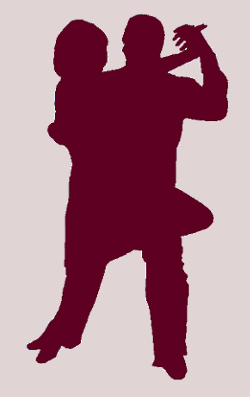Third voice
Tango needs two people for dancing, that much is clear. But on second thoughts two people are actually too few for tango. Two is enough for a walk together, but not for a dance. The dance requires something else, something common for both partners and yet existing independently. It requires the so called third voice. Of course this is the music. There is a deep sense in thinking about music as the third voice in a dialogue of two persons using tango language.
Too often you can see tangeros who take the music just as a signal to go to the dance floor and when it stops, it is the time to leave.
In good dancing the music is the same participant of the process as the partner. Any set of movements, any figure only make sense as an interpretation of some rhythm or melody. Thus the things that without music would come from a partner unexpectedly become much more predictable. The tension of defining 'when' vanishes and remains only 'how'. Moreover, the music has certain psychedelic properties and this effect multiplies in the mutual movement. This defines the way of teaching tango. We do not practice movements together with a partner. We practice movements together with partner and music.
